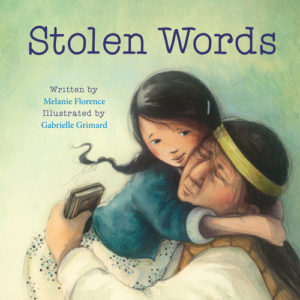 Writing about the ravages of colonial control over First Nations in the United States and Canada is difficult enough when addressing adults. It’s even more challenging when presenting material to the youngest readers. How to convey the seriousness and depth of pain without crushing the spirit of the child reader–it’s a huge challenge, and I admire any author who even attempts to take it on. Few come out with such a successful result as author Melanie Florence in her picture book Stolen Words about her grandfather’s forced enrollment in boarding school and the loss of his mother tongue. Ms. Florence tells the story of a young girl who innocently asks her grandfather how to say grandpa in Cree. He tells her about being taken away from home and punished at the boarding school for speaking his Cree language. Illustrator Gabrielle Grimard captures this beautifully representing the Cree language as a blackbird captured in a cage and locked away. It’s an image that conveys the sadness and brutality of the Canadian boarding school without presenting images too heart-breaking for young readers. The girl finds a Cree dictionary in her own school and brings it to her grandfather and the words on the page, again symbolically, take the fo
Writing about the ravages of colonial control over First Nations in the United States and Canada is difficult enough when addressing adults. It’s even more challenging when presenting material to the youngest readers. How to convey the seriousness and depth of pain without crushing the spirit of the child reader–it’s a huge challenge, and I admire any author who even attempts to take it on. Few come out with such a successful result as author Melanie Florence in her picture book Stolen Words about her grandfather’s forced enrollment in boarding school and the loss of his mother tongue. Ms. Florence tells the story of a young girl who innocently asks her grandfather how to say grandpa in Cree. He tells her about being taken away from home and punished at the boarding school for speaking his Cree language. Illustrator Gabrielle Grimard captures this beautifully representing the Cree language as a blackbird captured in a cage and locked away. It’s an image that conveys the sadness and brutality of the Canadian boarding school without presenting images too heart-breaking for young readers. The girl finds a Cree dictionary in her own school and brings it to her grandfather and the words on the page, again symbolically, take the fo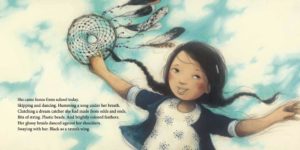 rm of blackbirds and fly free. It’s a simple tale–too simple for older readers certainly who need much more substance and a less tidy resolution. But for the youngest readers this is an important story of native language denied and ultimately regained, and a book well worth celebrating.
rm of blackbirds and fly free. It’s a simple tale–too simple for older readers certainly who need much more substance and a less tidy resolution. But for the youngest readers this is an important story of native language denied and ultimately regained, and a book well worth celebrating.
Stolen Words is published by Second Story Press out of Toronto, Ontario. It will be available in September of 2017. I wrote this review from an Advanced Reader Copy which I obtained at the independent bookstore where I work. If you are looking for more context as an adult reader I highly recommend They Called Me Number One by Bev Sellars, and acclaimed author from British Columbia. She is a chief of the Xat’sull and her book is about her own experiences in boarding school. It’s not a read for the tenderhearted but it is very useful in understanding the depth of wrong that was done in Indian boarding schools across the Unites States and Canada.

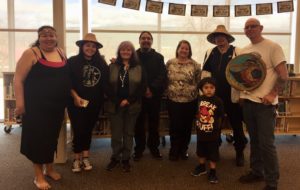
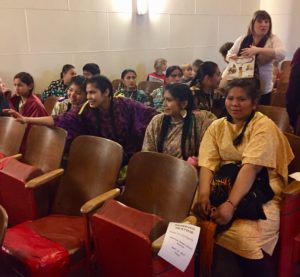
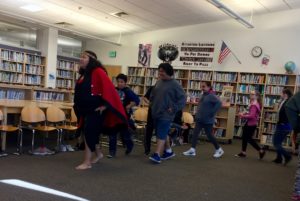 A lot of the work of being an author is the dull and dry sitting at a desk (even when that desk is in a tree) and writing day after day. But every now and then an event comes along that you know you’ll remember forever. The American Indian Cultural Festival in The Dalles last week was just such a moment. It was a celebration of literature and poetry and music and dance. It involved a group of books that I admire and authors I feel honored to share the stage with: Elizabeth Woody, Oregon’s Poet Laureate, Craig Lesley, acclaimed author of contemporary western literature, and National Book Award winning writer Sherman Alexie.
A lot of the work of being an author is the dull and dry sitting at a desk (even when that desk is in a tree) and writing day after day. But every now and then an event comes along that you know you’ll remember forever. The American Indian Cultural Festival in The Dalles last week was just such a moment. It was a celebration of literature and poetry and music and dance. It involved a group of books that I admire and authors I feel honored to share the stage with: Elizabeth Woody, Oregon’s Poet Laureate, Craig Lesley, acclaimed author of contemporary western literature, and National Book Award winning writer Sherman Alexie.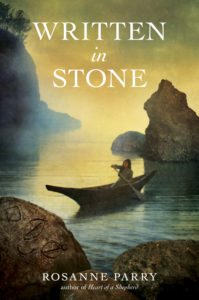 conjunction with the great booksellers at Oregon’s oldest bookstore Klindt’s who sold all the books and hosted many of the events. Tina Ontiveros is the manager at Klindt’s and Joaquin Perez is the owner. The fundraising for this event was truly a community affair with donations coming from area schools and libraries, educational foundations, local congregations, Oregon’s poet laureate program, the Wasco County Cultural Trust, the Ford Foundation, the Meyer Memorial Trust, and the Confederated Tribes of the Grande Ronde. It’s inspiring to see so many community members come together in support of literacy and the cultural understanding of our local American Indian communities. Thank you!
conjunction with the great booksellers at Oregon’s oldest bookstore Klindt’s who sold all the books and hosted many of the events. Tina Ontiveros is the manager at Klindt’s and Joaquin Perez is the owner. The fundraising for this event was truly a community affair with donations coming from area schools and libraries, educational foundations, local congregations, Oregon’s poet laureate program, the Wasco County Cultural Trust, the Ford Foundation, the Meyer Memorial Trust, and the Confederated Tribes of the Grande Ronde. It’s inspiring to see so many community members come together in support of literacy and the cultural understanding of our local American Indian communities. Thank you!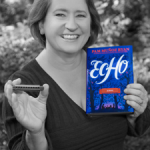
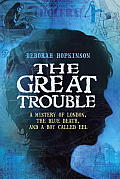 mother’s field. It’s an account of how the enterprising Dr. Snow and a couple of street urchins proved that a cholera epidemic that a broke out in Victorian London was caused not by the heavily polluted air but by the contaminated water in the Broad Street pump.
mother’s field. It’s an account of how the enterprising Dr. Snow and a couple of street urchins proved that a cholera epidemic that a broke out in Victorian London was caused not by the heavily polluted air but by the contaminated water in the Broad Street pump.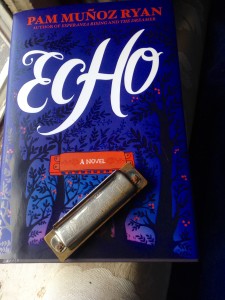 Lost and alone in a forbidden forest, Otto meets three mysterious sisters and suddenly finds himself entwined in a puzzling quest involving a prophecy, a promise, and a harmonica. Decades later, Friedrich in Germany, Mike in Pennsylvania, and Ivy in California each, in turn, become interwoven when the very same harmonica lands in their lives. All the children face daunting challenges: rescuing a father, protecting a brother, holding a family together. And ultimately, pulled by the invisible thread of destiny, their suspenseful solo stories converge in an orchestral crescendo.
Lost and alone in a forbidden forest, Otto meets three mysterious sisters and suddenly finds himself entwined in a puzzling quest involving a prophecy, a promise, and a harmonica. Decades later, Friedrich in Germany, Mike in Pennsylvania, and Ivy in California each, in turn, become interwoven when the very same harmonica lands in their lives. All the children face daunting challenges: rescuing a father, protecting a brother, holding a family together. And ultimately, pulled by the invisible thread of destiny, their suspenseful solo stories converge in an orchestral crescendo. 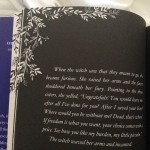
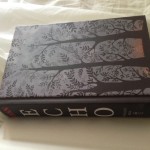 to edge it up to YA. This is the perfect book for that tender-hearted teenaged reader who is not interested in sexual relationships and blatant violence. It’s also great for that really young high level reader who needs a challenge and a story with substance but isn’t up for YA content.
to edge it up to YA. This is the perfect book for that tender-hearted teenaged reader who is not interested in sexual relationships and blatant violence. It’s also great for that really young high level reader who needs a challenge and a story with substance but isn’t up for YA content.